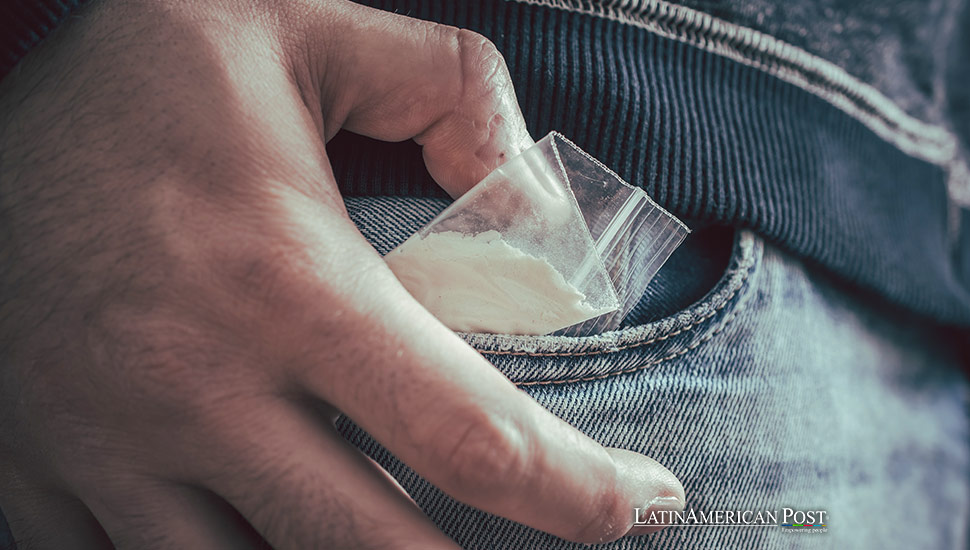Cuba Faces Rising Drug Use Amid Economic Hardships

Cuba, long known for strict drug control, confronts escalating illegal drug consumption, especially among its youth, as economic strains expose vulnerabilities in its zero-tolerance narcotics policy.
In a candid admission that marks a significant shift from its historical stance, Cuba has reported a noticeable increase in illegal drug use, challenging the communist-run nation’s longstanding record of stringent narcotics control. This development is particularly concerning as it predominantly affects young people, underscoring a growing social issue that intertwines with the island’s acute economic downturn.
Targeting Youth Drug Consumption
Dr. Alejandro García, director of the Mental Health Center of Central Havana, highlighted in a state-run Granma newspaper interview the troubling trend of rising drug consumption among Cuban adolescents and youth. This demographic, identified as the most vulnerable group, is at the center of the health officials’ concerns as they strive to “control and contain” this surge amidst a challenging economic landscape.
Cuba’s “zero tolerance” policy towards drugs has been a cornerstone of its national identity, with the government historically enforcing severe penalties for drug-related crimes. However, the current economic crisis, described as the worst in decades, has coincided with not only an uptick in drug use but also a perceived increase in crime rates across the island.
The scarcity of specialized personnel in the healthcare sector exacerbates this problem. Dr. García pointed out the critical shortages in municipalities, some of which lack psychiatrists or professionals trained to manage addiction-related issues, further complicating the response to this escalating crisis.
The Cuban judicial system’s response to this uptrend in drug activity is evident in the significant number of convictions related to drug trafficking and consumption. In 2023 alone, 689 individuals were convicted, facing severe penalties ranging from four years to life imprisonment and, in extreme cases, the death sentence, as stipulated by the Cuban Penal Code.
Emerging New Chemicals
While specific details on the types of drugs prevalent in Cuba remain undisclosed, the emergence of “new chemicals” presents a formidable challenge for authorities attempting to curb their spread. This situation is indicative of a more significant, more complex issue facing the nation, as Cuba’s strategic geographical position makes it a pivotal node in the international drug trafficking route. This pathway has historically facilitated the northward movement of narcotics like cocaine and marijuana from Central and South America to the United States.
The implications of Cuba’s drug use spike resonate beyond its shores, shedding light on a broader regional challenge faced by many Latin American countries. Nations such as Mexico, Colombia, and Brazil have long grappled with the ramifications of drug trafficking and consumption, witnessing how these illicit activities can undermine social stability, public health, and economic development.
In Mexico, the war against drug cartels has been a prolonged battle with significant human and economic costs. Colombia, known for its historical association with the cocaine trade, continues to confront the dual challenges of curbing drug production and addressing internal consumption. Brazil’s struggle with drug-related violence and addiction further exemplifies the pervasive nature of this issue in the region.
The rise in drug use in Cuba, therefore, is not an isolated phenomenon but part of a complex tapestry of drug-related challenges that permeate the Latin American region. These challenges are exacerbated by economic strains, social disparities, and the inadequacy of public health infrastructure to manage addiction and its societal impacts effectively.
Nuanced Approach Needed
Cuba’s situation calls for a reevaluation of its drug policy and enforcement strategies, considering the changing dynamics of drug consumption and trafficking. It also emphasizes the need for comprehensive regional cooperation to address the root causes of drug abuse and trafficking, including poverty, inequality, and the lack of economic opportunities.
As Cuba grapples with this burgeoning drug issue, the need for a more nuanced approach becomes apparent. Strategies that combine strict enforcement with robust prevention, education, and rehabilitation programs are essential to mitigate the risks and help vulnerable populations, especially the youth.
Also read: Cuba’s Havana Syndrome Mystery and Latin America’s Unseen Threat
Cuba’s acknowledgment of rising drug use amid economic adversities is a wake-up call not only for the island nation but also for the wider Latin American region. It highlights the intricate link between financial health and drug consumption. It underscores the necessity for integrated and compassionate policies that address both the symptoms and root causes of drug abuse. As Cuba and its Latin American neighbors navigate these troubled waters, the pursuit of sustainable solutions to drug-related challenges remains a critical agenda for ensuring the welfare and prosperity of their citizens in the years to come.




